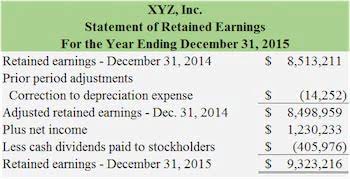
It is important to take into account the two terms, current assets, and current liabilities, as we will be talking about this frequently in our discussion. Short-term debt capital is provided to companies for a short period of time – repayment usually takes place within a few months. Then, adjust based on your cash conversion cycle, industry norms, and growth plans. Most businesses aim to have enough to cover 2-3 months of operating expenses. With working capital financing, companies receive short-term fresh liquidity to settle liabilities, make investments, or improve their cash flow.
- Ltd. for 6 years, where he worked on debt valuation, equity valuation, portfolio valuation services for M&A advisory, financial reporting, tax planning, and management planning purposes.
- Learn all about vendor payments, how the process works, and how Fincent can help you automate the process.
- Karanj holds a Post Graduate Diploma in Management from the Institute of Management Technology, Ghaziabad, and a Bachelor of Technology in Mechanical Engineering from Dharmsinh Desai Institute of Technology.
- Technology companies may also need to have enough working capital to cover the cost of hiring and retaining top talent.
- Loans of $250K are only approved for customers with strong credit profiles and sufficient verified monthly revenue.
- If the target company has a high level of debt, the buyer may require the seller to pay off some of the debt or provide additional collateral to secure the loan.
Key Takeaways

If your current ratio drops below 1 though (negative working capital), that’s a red flag indicating that your company may struggle to cover short-term debts and financial obligations. Working capital can be either positive or negative, and each scenario has distinct implications for a business’s financial health. Positive working capital indicates that a business has sufficient current assets to cover its short-term liabilities, offering flexibility to handle unexpected expenses or seize investment opportunities. Operating working capital (OWC) is defined as operating current assets less operating current liabilities.
📊 Master Excel & Finance SkillsJoin 100K+ Learners⚡upto80% OFF!Instructor: Dheeraj Vaidya, CFA, FRM
Consider shortening the payment term to 30 days by offering early payment discounts, enforcing stricter credit terms, or automating reminders. Once done, you’ll get payments faster and can instantly use them to pay suppliers, fund operations, and expand your business. Work with both suppliers and customers to negotiate payment terms that favor your cash flow needs. While having sufficient working capital is crucial for the smooth operation of a business, there are disadvantages of excessive working capital. Continuous monitoring and adjustment of working capital levels are essential for optimising financial performance.
How to Optimize Working Capital Management
- His extensive knowledge spans various areas, including day-to-day bookkeeping, accounts payable, month-end closing tasks, financial statement preparation and analysis.
- By properly managing the working capital cycle, one can help the organization not to affect the situation of crises or cash crunches and pay for its day-to-day expenses on a timely basis.
- The interpretation of either working capital or net working capital is nearly identical, as a positive (and higher) value implies the company is financially stable, all else being equal.
- Additionally, it doesn’t provide insights into the efficiency of individual components within current assets and liabilities, and industry norms may vary, making comparisons challenging.
- The business has net positive working capital if the ratio is 1 or above.
Proper management of working capital ensures that a business can pay its short-term obligations, purchase inventory, and cover operational expenses. Adequate working capital also prevents cash shortages, helps maintain creditworthiness, and allows businesses to take advantage of opportunities promptly. For exam answers, remember working capital is linked to liquidity, solvency, and day-to-day efficiency. The “working capital ratio” is another way of measuring business liquidity, or the amount of liquid assets available to a company.

A business with adequate working capital can invest in growth opportunities, leading to increased proceeds and reduced cost of goods sold. In contrast, a company with inadequate working capital may struggle to invest in growth opportunities, leading to reduced proceeds and increased cost of goods sold. Interest payable is the interest that a company owes on its outstanding debt.
Small Businesses
These businesses have enough cash to pay off their debts with some left over to invest in the company. This shows lenders and investors that you are reliable in servicing your debts with the potential for growth. The four main components of working capital are cash, accounts receivable, inventory, and accounts payable. Cash refers to the amount of money a company has on hand, while accounts receivable is the amount of money owed to the company by its customers. Inventory refers to the goods a company has in stock, and accounts payable refers to the amount of money the company Online Bookkeeping owes to its suppliers. A current ratio of 1 or higher is generally considered good, as it indicates that a company has enough current assets to cover its current liabilities.
The term “operating” identifies assets or liabilities that are used in the day-to-day operations of the business or that are not interest-earning or bearing (financial). The net working capital (NWC) calculation only includes operating current assets like accounts receivable (A/R) and inventory, as well as operating current liabilities such as accounts payable and accrued expenses. The working capital formula subtracts your current liabilities (what working capital formula you owe) from your current assets (what you have) in order to measure available funds for operations and growth.
With real-time data and advanced tools, InvestingPro can help you make informed decisions and take your financial management to the next level. This ratio provides a more conservative view of liquidity, as inventory can be harder to convert into cash quickly. For these reasons, working capital is often considered the lifeblood of a business, ensuring it can operate smoothly day-to-day while positioning itself for long-term success. On this page, we’ll break down everything you need to know — from understanding its key components to learning how to calculate it accurately.

Challenges in Managing Working Capital
In the case of a smaller business, the lender may also ask for a personal guarantee, especially when you have substantial personal assets. A larger firm with a good credit rating may be able to avoid this personal guarantee requirement. As a general rule, most lenders will not grant a working capital loan that exceeds 10% of your organization’s sales. When reviewing proposals for investments in new capital projects, be sure to include in the analysis the amount that must be invested in working capital as a result of the investment. For example, a proposal to create a new product line will require not only an investment in inventory, but https://www.bookstime.com/ also in new accounts receivable when the goods are sold on credit. These investments will be offset by any accounts payable expected to be owed to suppliers.
 Colors
Colors  Docs
Docs  Support
Support 
